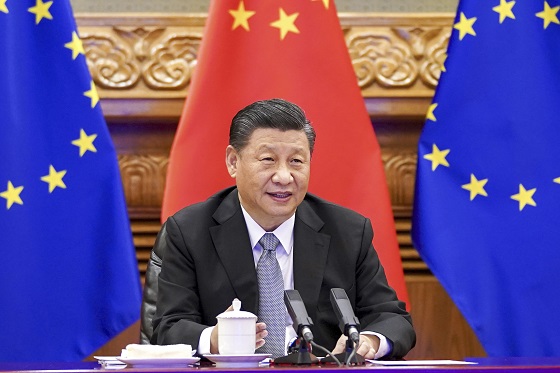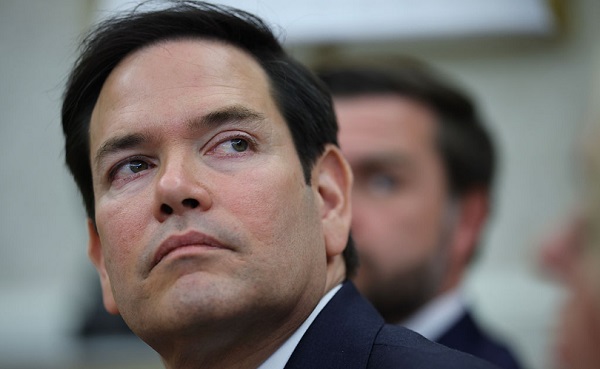Alberta
A regional comparison of ALERT crime stats for 2019 – Arrests, Charges, Guns, Drugs off the streets

From the Alberta Law Enforcement Response Team
Transition, Triumph for ALERT in 2019
While changes were afoot, including a new CEO, Alberta Law Enforcement Response Teams still managed to achieve one of its most successful years ever in 2019.
Over the calendar year, ALERT teams across the province laid 1,402 criminal charges against 241 suspects; took 92 firearms out of the hands of gang members and drug dealers; seized more than $4 million in proceeds of crime; and removed nearly $13 million worth of cocaine, fentanyl and methamphetamine from the streets of Alberta communities.
“Since being appointed chief executive officer in August 2019, I’ve been very impressed with ALERT’s operations and the results the organization is able to achieve,” said ALERT CEO Supt. Dwayne Lakusta. “It’s a fast-paced, ever-changing landscape, but our front-line investigators and support staff behind the scenes do exceptional work to keep up and deliver the results Albertans expect.”
ALERT is mandated to address organized and serious crime across Alberta, with regional offices located in Calgary, Edmonton, Fort McMurray, Grande Prairie, Lethbridge, Medicine Hat, and Red Deer. A breakdown of statistics by region for the 2019 calendar year is available on ALERT’s website and YouTube channel.
The biggest highlight of the year for ALERT was Project Coyote, a joint investigation with the U.S. Drug Enforcement Administration that resulted in record amounts of cocaine and fentanyl pills seized. All told, over the course of two years, Project Coyote resulted in the seizure of $15 million worth of drugs, including 81.5 kilograms of cocaine in Houston, Texas, and 250,000 fentanyl pills in a Calgary apartment.
“Project Coyote was a lengthy, complex investigation, and I applaud our team in Calgary for their ongoing commitment to the investigation,” Lakusta said. “It’s a significant bust, and a great example of the efforts taken by our teams to fight organized crime.”
Some of ALERT’s other successes in 2019 include: outlaw bikers arrested for drug trafficking in Red Deer; a firearms straw purchaser foiled in Grande Prairie; a B.C.-Edmonton drug pipeline cut off; a record meth seizure in Medicine Hat; an arrest made in Lethbridge in a series of vehicle thefts; and two children being rescued as result of a child exploitation investigation.
A compilation of highlights from 2019 is available on ALERT’s website.
With new funding foreshadowed in the recent provincial budget and ALERT’s successes from 2019 to build upon, Lakusta is looking forward to expanding on the organization’s important work in 2020.
“We are excited to enhance opportunities to make communities across Alberta safer,” Lakusta said. “By working closely with other law enforcement agencies and community partners, we will continue to work toward our goals of disrupting and dismantling organized crime.”
Members of the public who suspect drug or gang activity in their community can call local police, or contact Crime Stoppers at 1-800-222-TIPS (8477). Crime Stoppers is always anonymous.
ALERT was established and is funded by the Alberta Government and is a compilation of the province’s most sophisticated law enforcement resources committed to tackling serious and organized crime.

Alberta
Red Deer Justice Centre Grand Opening: Building access to justice for Albertans

The new Red Deer Justice Centre will help Albertans resolve their legal matters faster.
Albertans deserve to have access to a fair, accessible and transparent justice system. Modernizing Alberta’s courthouse infrastructure will help make sure Alberta’s justice system runs efficiently and meets the needs of the province’s growing population.
Alberta’s government has invested $191 million to build the new Red Deer Justice Centre, increasing the number of courtrooms from eight to 12, allowing more cases to be heard at one time.
“Modern, accessible courthouses and streamlined services not only strengthen our justice
system – they build safer, stronger communities across the province. Investing in the new Red Deer Justice Centre is vital to helping our justice system operate more efficiently, and will give people in Red Deer and across central Alberta better access to justice.”

Government of Alberta and Judiciary representatives with special guests at the Red Deer Justice Centre plaque unveiling event April 22, 2025.
On March 3, all court services in Red Deer began operating out of the new justice centre. The new justice centre has 12 courtrooms fully built and equipped with video-conference equipment to allow witnesses to attend remotely if they cannot travel, and vulnerable witnesses to testify from outside the courtroom.
The new justice centre also has spaces for people taking alternative approaches to the traditional courtroom trial process, with the three new suites for judicial dispute resolution services, a specific suite for other dispute resolution services, such as family mediation and civil mediation, and a new Indigenous courtroom with dedicated venting for smudging purposes.
“We are very excited about this new courthouse for central Alberta. Investing in the places where people seek justice shows respect for the rights of all Albertans. The Red Deer Justice Centre fills a significant infrastructure need for this rapidly growing part of the province. It is also an important symbol of the rule of law, meaning that none of us are above the law, and there is an independent judiciary to decide disputes. This is essential for a healthy functioning democracy.”
“Public safety and access to justice go hand in hand. With this investment in the new Red Deer Justice Centre, Alberta’s government is ensuring that communities are safer, legal matters are resolved more efficiently and all Albertans get the support they need.”
“This state-of-the-art facility will serve the people of Red Deer and surrounding communities for generations. Our team at Infrastructure is incredibly proud of the work done to plan, design and build this project. I want to thank everyone, at all levels, who helped make this project a reality.”
Budget 2025 is meeting the challenge faced by Alberta with continued investments in education and health, lower taxes for families and a focus on the economy.

Quick facts
- The new Red Deer Justice Centre is 312,000 sq ft (29,000 m2). (The old courthouse is 98,780 sq ft (9,177 m2)).
- The approved project funding for the Red Deer Justice Centre is about $191 million.
Alberta
CPP another example of Albertans’ outsized contribution to Canada

From the Fraser Institute
By Tegan Hill
Amid the economic uncertainty fuelled by Trump’s trade war, its perhaps more important than ever to understand Alberta’s crucial role in the federation and its outsized contribution to programs such as the Canada Pension Plan (CPP).
From 1981 to 2022, Albertan’s net contribution to the CPP—meaning the amount Albertans paid into the program over and above what retirees in Alberta received in CPP payments—was $53.6 billion. In 2022 (the latest year of available data), Albertans’ net contribution to the CPP was $3.0 billion.
During that same period (1981 to 2022), British Columbia was the only other province where residents paid more into the CPP than retirees received in benefits—and Alberta’s contribution was six times greater than B.C.’s contribution. Put differently, residents in seven out of the nine provinces that participate in the CPP (Quebec has its own plan) receive more back in benefits than they contribute to the program.
Albertans pay an outsized contribution to federal and national programs, including the CPP because of the province’s relatively high rates of employment, higher average incomes and younger population (i.e. more workers pay into the CPP and less retirees take from it).
Put simply, Albertan workers have been helping fund the retirement of Canadians from coast to coast for decades, and without Alberta, the CPP would look much different.
How different?
If Alberta withdrew from the CPP and established its own standalone provincial pension plan, Alberta workers would receive the same retirement benefits but at a lower cost (i.e. lower CPP contribution rate deducted from our paycheques) than other Canadians, while the contribution rate—essentially the CPP tax rate—to fund the program would likely need to increase for the rest of the country to maintain the same benefits.
And given current demographic projections, immigration patterns and Alberta’s long history of leading the provinces in economic growth, Albertan workers will likely continue to pay more into the CPP than Albertan retirees get back from it.
Therefore, considering Alberta’s crucial role in national programs, the next federal government—whoever that may be—should undo and prevent policies that negatively impact the province and Albertans ability to contribute to Canada. Think of Bill C-69 (which imposes complex, uncertain and onerous review requirements on major energy projects), Bill C-48 (which bans large oil tankers off B.C.’s northern coast and limits access to Asian markets), an arbitrary cap on oil and gas emissions, numerous other “net-zero” targets, and so on.
Canada faces serious economic challenges, including a trade war with the United States. In times like this, it’s important to remember Alberta’s crucial role in the federation and the outsized contributions of Alberta workers to the wellbeing of Canadians across the country.
-

 2025 Federal Election1 day ago
2025 Federal Election1 day agoStudy links B.C.’s drug policies to more overdoses, but researchers urge caution
-

 Business2 days ago
Business2 days agoTrump: China’s tariffs to “come down substantially” after negotiations with Xi
-

 conflict2 days ago
conflict2 days agoMarco Rubio says US could soon ‘move on’ from Ukraine conflict: ‘This is not our war’
-

 Business2 days ago
Business2 days agoChinese firm unveils palm-based biometric ID payments, sparking fresh privacy concerns
-

 Alberta2 days ago
Alberta2 days agoRed Deer Justice Centre Grand Opening: Building access to justice for Albertans
-

 2025 Federal Election1 day ago
2025 Federal Election1 day agoCarney’s Hidden Climate Finance Agenda
-

 2025 Federal Election1 day ago
2025 Federal Election1 day agoWhen it comes to pipelines, Carney’s words flow both ways
-

 Business2 days ago
Business2 days agoTrump considers $5K bonus for moms to increase birthrate




